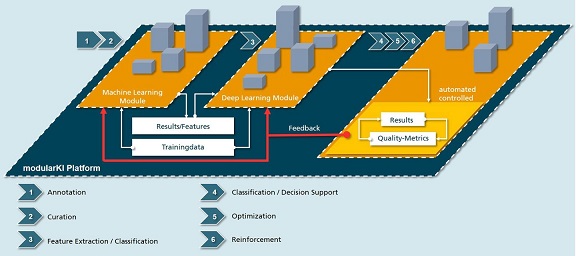Fraunhofer FIT Develops Modular AI Platform to Optimize PCB Design, Test
SANKT AUGUSTIN, GERMANY – The Fraunhofer Institute for Applied Information Technology FIT has developed a modular artificial intelligence platform to optimize the design and testing of PCBs, reportedly reducing the requisite outlay by as much as 20%.
The modular platform comprises modules for machine learning, deep learning and AI. In turn, each module features algorithms trained to undertake different tasks. For example, an algorithm from the first type of module not only classifies input data but also extracts features from that data, which then provide the input for further modules.
The development shows what a future inspection process can look like. As in conventional AOI, a camera records images of the PCB. This improves the quality of the decisions made by the algorithms. Here, it is vital the modules are provided with high-quality training data, the research institute says. Initially, the modules for machine learning and deep learning are fed with a good selection of data.
“The modular design means we can harness several algorithms, which continually enhance their own performance. Data generated by ongoing automated inspection of components flows back to the algorithm. This then provides the basis for a process of self-learning by the artificial intelligence module,” said Timo Brune, project manager at Fraunhofer FIT. “This permanent feedback enhances the database and optimizes the true negative rate. Early estimates from industry indicate this could reduce the use of production resources by around 20%.”
Users can train the modules themselves based on their own process and production data. This means companies retain control of their own data and are not required to send it to an external server, for example. This toolkit of algorithms can be combined for application to specific problems.
Once trained, the algorithms can also be used to design new PCBs. An algorithm helps predict which configuration, from a host of options, offers the best functionality.
This approach can be applied to many other electrical systems as well, Fraunhofer FIT says.

Press Releases
- AIM Solder Appoints Angel Lopez as Technical Support Engineer in North America
- AIM Solder Appoints Angel Lopez as Technical Support Engineer in North America
- Viscom Inc. Presents AI-Driven Inspection Innovations at APEX Expo 2026
- Libra Industries Names Tony Jepson as General Manager of Dallas Facility







